

Throughout a few courses involving Materials and Processes, I was able to grow my knowledge and skill on woodworking, metal work and various machineries. I worked as an individual and in teams to complete these products.
Jewelry Box
ITEC 130 Production Materials and Processes
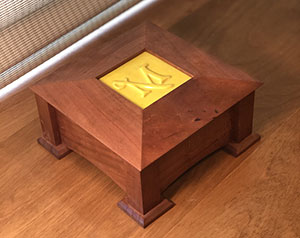
This jewelry was made from cherry wood and a ceramic tile. The cherry wood had to be processed on the jointer and planer and from there each part could be created. The lid for the jewelry box was made by angling the table saw blade at a 45º angle when ripping the pieces. A fixture was then used to cross cut the pieces to length with miters on the ends. The sides and feet on the jewelry box were cut from the CNC machine. The ceramic tile was made using a mold with clay on top that was then imprisoned using compressed air.
Steam Engine
ITEC 130 Production Materials and Processes
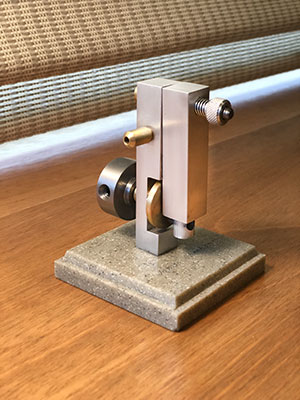
All parts of this steam engine were hand made. Plans were provided for each part including dimensions, tolerances and top, front and side views. These plans had to be followed when creating the part. A majority of the parts were created using a metal lathe, including the air inlet, flywheel and bearing. Several tools and techniques were used, such as knurling, tapping, threading, and chamfering. A milling machine was used for the engine’s aluminum cylinders to mill the pieces to length and to drill holes for the pieces to connect. All parts were checked for accuracy and within tolerance range by using a caliper.
Greene & Greene-Style Clock
ITEC 272 Processing Nonmetallic Materials
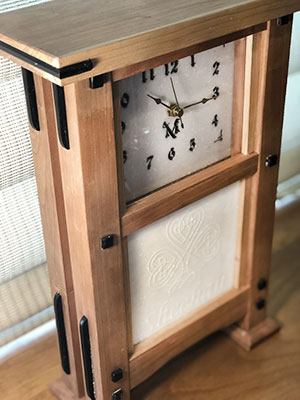
This clock was made from cherry wood and has overall dimensions of 16” high by 5” deep by 12” wide. SketchUP, a 3D modeling computer program, was used to draw all of the parts of this clock. This allowed me to visualize how everything would fit together before processing the wood. A jointer, planer, table saw, scroll saw, CNC and several other machineries were used to create this clock. The Corian, black accent strips and the bottom rails were drawn in a CAD file and then cut and engraved with the CNC machine.
Greene & Greene-Style Clock Plans
Contemporary Lamp
ITEC 344 Product Design
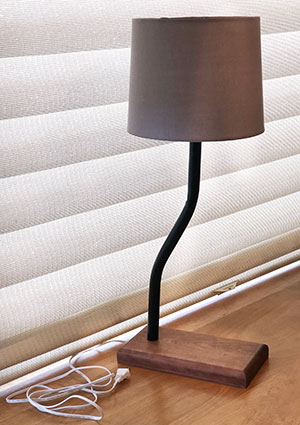
This was the third product created in my Product Design class. This was the first one where we had to create a mock-up, model and three prototypes of the product. We had to design a lamp that fit within the aesthesis and price range of a typically contemporary lamp. My team used the table saw to make the base of the lamp and use a chamfer on the edges. We used the drill press to create the hole for the neck of the lamp and the wires to meet. We bent conduit and spray painted it black to achieve the look we wanted. We then wired the lamp and bought a lamp shade to finish off the design.
Peg Board
ITEC 435 Manufacturing Enterprise
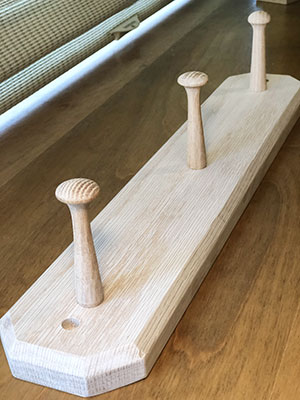
To test our skills in my manufacturing enterprise class, we worked as a class to complete this wood peg board. There was a packaging team and manufacturing team. I was a co-leader of the class and had to assign roles within the assembly line.